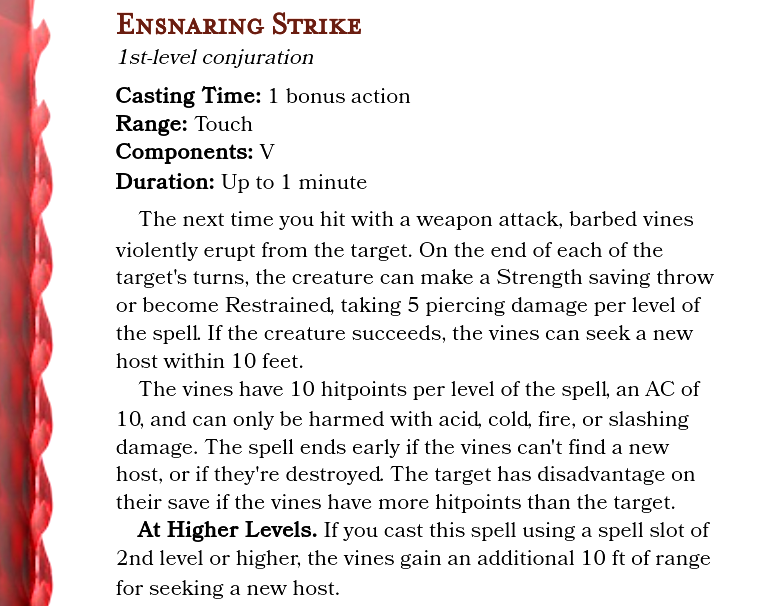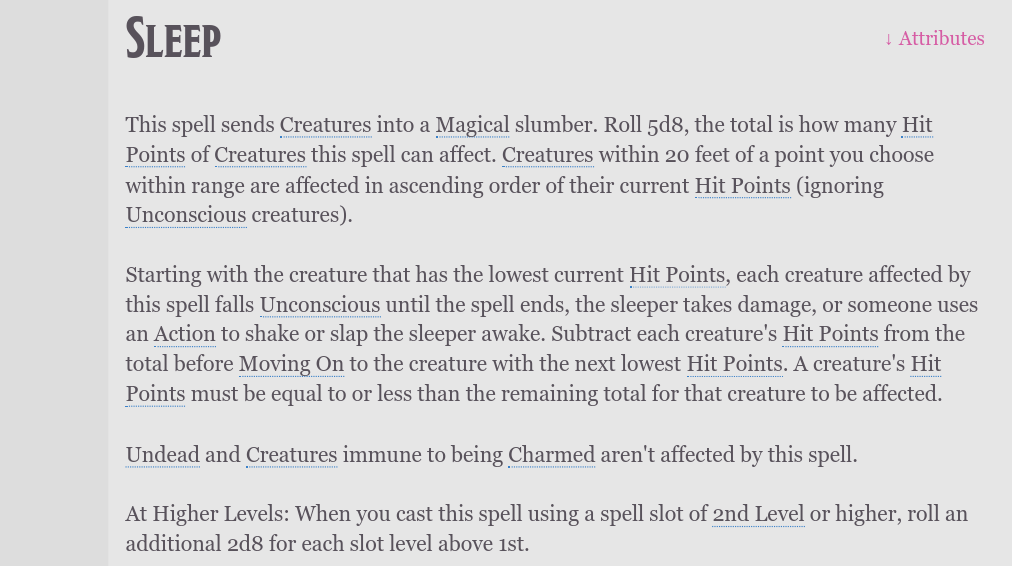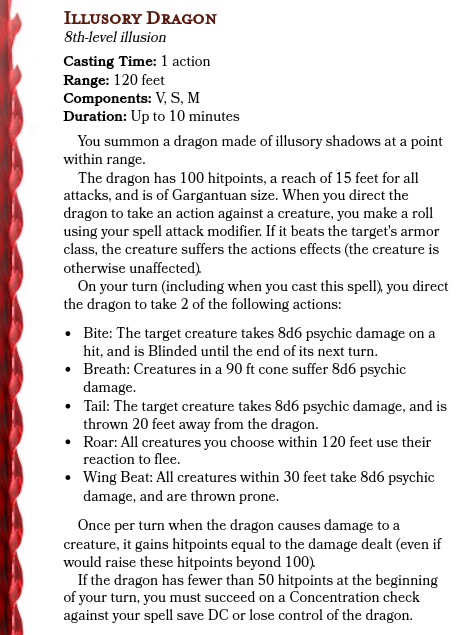Man, 5e has so few summoning spells. I’m not just talking about the PHB either, the few supplements which include new spells (and notice, we’ve received no supplements dedicated to spells) still only introduce a number of spells you can count on one hand. Not only that, several of the summoning spells don’t summon a creature from a monster manual, but instead summon a generic statblock provided by the spell. The main purpose of summoning spells, which is to briefly enjoy abilities normally restricted to monsters, was intentionally ignored so as to provide stablocks so boring you could’ve simply paid a hireling or henchman or whatever to achieve the same effect, without wasting spell slots.
Conjure minor elementals precedes WOTC’s trend towards more boring summoning spells, but the subject of our redesign may have caused said trend. It’s a tremendous spell! While most monsters designed by the folks from Seattle are boring, elementals look to buck this trend with surprising frequency. What’s more, the majority of elementals available (especially during the game’s release) fit into the spell’s limits.
Emblematic of 5e’s low level elementals are critters called mephits. Mephits have the widest variety of subtypes in 5e (ranging from cr 1/4 to 1/2 in the monster manual and giving multiple options for damage types), a breath weapon (which usually inflicts a condition or status effect), innate spellcasting (so your summoning spell summons other spellcasters), and a death-burst (an effect which deals damage and/or a status effect similar to that of their breath weapon) which activates upon their death. Spellcasting monsters with variable damage types and resistances/immunities, breath weapons, who double as living explosives.
The spell allows you to summon a bunch of extra combatants, who have a disproportionate number of cool abilities and attacks, who are potentially also spellcasters, and can even serve a purpose by dying. If I were a lesser man, this is where I’d say the spell is too strong. In reality, the spell is comparable to the benefits and detriments of other spells at similar levels, in spite of how much more fun the spell is. It’s an important distinction to make, because lots of folks protest a spell being more fun than another as being in some way unfair or unbalanced. If the math checks out between conjure minor elementals and storm sphere, the fact one appeals more to a given playstyle or character theme has nothing to do with whether it’s balanced.
So, why then am I (as mentioned in the intro) toning down the spell’s power? Because the spell disproportionately loads on a DM’s ability to adjudicate the game. Unfortunately, 5th edition uses saving throws to adjudicate the effectiveness of features which inflict conditions or deal area of effect damage. This is one of the slower ways to adjudicate such features, and 5th edition combat suffers for it. However, if a spell allows you to summon creatures with such abilities, all but some of the fastest or resourceful DMs are going to get dragged down significantly. The longer you extend rounds of combat to focus on these summons, the more likely the DM is to forget their monsters’ turns, legendary or lair actions, and any environmental or spell effects. Again, there’s nothing wrong with the principle of summoning to begin with, the problem is with 5e’s adjudication and how it wasn’t even optimized to handle the base players and the monsters they’d fight.
Adding 8 critters to the battle, all of whom have spells of their own, and AOE breath weapons, and AOE abilities procced on death, most if not all of which rely upon saving throws from every creature affected adds too much of a mental load to the game even if only one player does it.
TL;DR: I don’t want a spell’s power to come from overloading the DM’s brain. Conjure minor elementals is fine before that consideration, but now I have to compensate for it.
My Version (Better)





















































